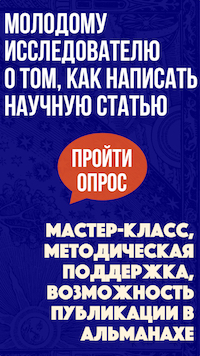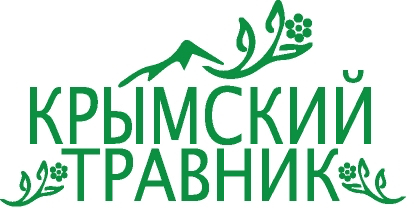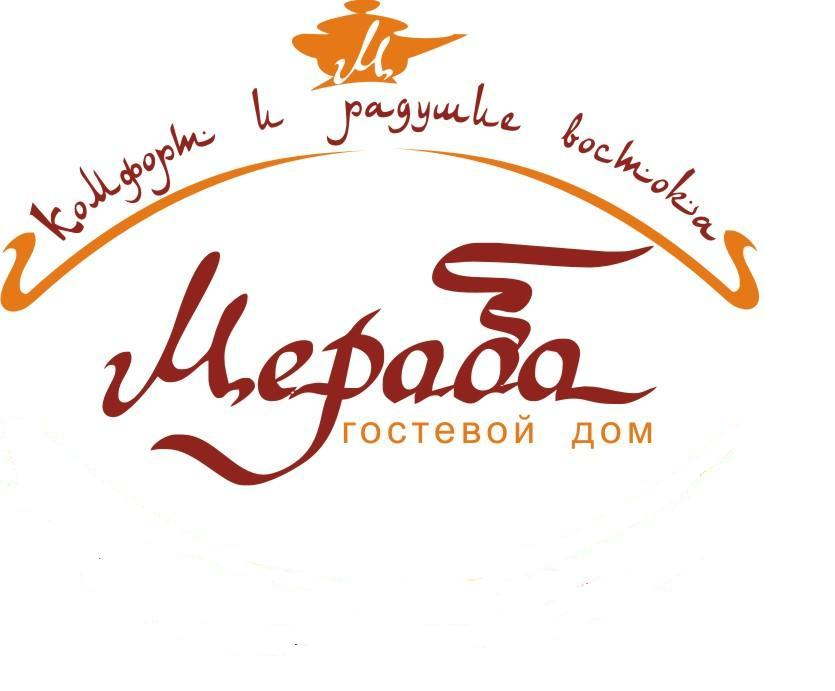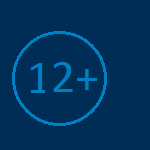МОЛОДЁЖНЫЙ ПРОЕКТ ДЛЯ ТЕХ, КТО ДЕЛАЕТ ПЕРВЫЕ ШАГИ В НАУКЕ
/components/bitrix/system.auth.form/auth_alm/images/login.gif) Войти
Войти /components/bitrix/system.auth.form/auth_alm/images/register.gif) Регистрация
Регистрация
Войти в корпоративную почту как автор/член редколлегии/рецензент журнала
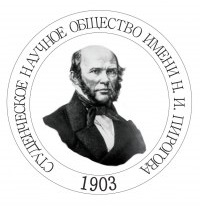


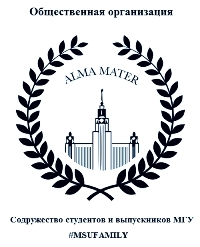
2016. Том 12. Выпуск 1. Крымоведение: пространство и время Крыма / Crimean Regional Studies: Space and Time of Crimea / Krimforschung: Raum und Zeit des Krim
Кохан А.А.
Немецкие пропагандистские мероприятия в Крыму в ноябре 1941 — сентябре 1942 гг.
Кохан Андрей Алексеевич, ведущий научный сотрудник, Крымский центр этнокультурных исследований Федерального государственного бюджетного учреждения культуры «Государственный республиканский центр русского фольклора» (Крымский центр этнокультурных исследований ФГБУК «ГРЦРФ», Симферополь)
E-mail: andrey-a-kokhan@j-spacetime.com; a_kokhan@mail.ru
В статье рассматриваются проблемы становления и развития немецкой пропагандистской машины на территории крымского полуострова в ноябре 1941 — сентябре 1942 гг.: с момента оккупации полуострова до создания центрального штаба, ответственного за проведение пропаганды среди немецких военнослужащих и гражданского населения.
Ключевые слова: Великая Отечественная война, оккупация Крыма, немецкая пропаганда, роты пропаганды, комендатуры, гражданское население.
Цитирование по ГОСТ Р 7.0.11—2011:
Кохан, А. А. Немецкие пропагандистские мероприятия в Крыму в ноябре 1941 — сентябре 1942 гг. [Электронный ресурс] / А.А. Кохан // Электронное научное издание Альманах Пространство и Время. — 2016. — Т. 12. — Вып. 1: Крымоведение: пространство и время Крыма. — Стационарный сетевой адрес: 2227-9490e-aprovr_e-ast12-1.2016.23.
Kokhan A.A.
German Propaganda Efforts in the Crimea in November 1941 — September 1942
Andrey A. Kokhan, M.Hum. (History), Leading Researcher at Crimean Center for Ethno-cultural Studies, State Republican Center of Russian Folklore (Simferopol)
E-mail: andrey-a-kokhan@j-spacetime.com; a_kokhan@mail.ru
Propaganda played an important role in the Second World War, its organization in occupied territories, including in Crimea is an important subject of research of modern historical science.
The subject matter of my article is functioning military authorities of the Nazi propaganda in Crimea in November 1941 — September 1942. This topic caused the use of source and narrative analysis as research methodology.
Based on archival and historiographical sources, I represent a brief sketch of Nazi propaganda events management in Crimean cities and countryside in 1941—1942. Thus, I have shown there was some organizational and legal disparity between the super-unified Wehrmacht’s upper management of military propaganda, on the one hand, and the necessity to take into account the local context, including in adverse terrains, when organizing specific propaganda events. That’s why in Crimea, dissemination of campaign materials and carrying out propaganda work from November 1941 until September 1942, both among the soldiers of the Wehrmacht and the civilians was carried out directly by propaganda detachments of military commandant's offices, located on the peninsula. Cinema, radio and visual propaganda, as well as release of periodicals in the major Crimean cities were under their jurisdiction. At the same time control the radio and the radio has been transferred to the Security Service. In the autumn of 1942, modification of propaganda companies began. It was decided that Reich-Ministries of Foreign Affairs, Economy and Eastern Territories will not have their own propaganda apparatus. Simultaneously, military propaganda system in Crimea also transformed: process of forming Propaganda Headquarters Crimea began. In accordance with the Order of the High Command on September 5, 1942, responsibility for the implementation of all propaganda tasks in the Crimea was allocated to U Propaganda Department.
In my article, I review some details of the organization of propaganda events in such cities of the Crimea, as Simferopol, Feodosia, Eupatoria, and Bakhchisarai before U Propaganda Department establishing.
Based on the military commandant's office reports, I defined main difficulties that German military command have in arrangement of the propaganda events. They are as follows: (i) a lack of equipment for the broadcasting launching; (ii) absence of motor transport for active propaganda; (iii) a lack of paper for printed and visual propaganda and for agitation posters and flyers. That is why a period since November 1941 until September 1942 in Crimea characterized by the dissemination of posters printed in Germany. Local periodicals became actively developed only in 1942. Nevertheless, the Nazi propaganda collapsed even before liberation of Crimea from the German troops.
Keywords: the Great Patriotic War, Nazi propaganda, occupation of Crimea, consolidation company, commandant's headquarters.
Cite MLA 7:
Kokhan, A. A. "German Propaganda Efforts in the Crimea in November 1941 — September 1942." Electronic Scientific Edition Almanac Space and Time 12.1 (‘Crimean Regional Studies: Space and Time of Crimea’) (2016). Web. <2227-9490e-aprovr_e-ast12-1.2016.23>. (In Russian).
Список литературы / References
Литература
Российский государственный архив социально-политической истории (РГАСПИ). Ф. 17. Оп. 125. Д. 38.
Центральный государственный архив высших органов власти и управления Украины (ЦГАВО Украины). Ф. КМФ-8. Оп. 1. Д. 11; Оп. 2. Д. 332, 394, 402, 403.
Отраслевой государственный архив Службы безопасности Украины (ОГА СБУ). Ф. 13. Оп. 1. Д. 376. Т. 21.
Государственный архив Республики Крым (ГАРК). Ф. П-156. Оп. 1. Д. 26.
Басов А.В. Крым в Великой Отечественной войне 1941—1945. М.: Наука, 1987. 334 с.
Болокина Л.А. Немецкая пропаганда среди населения Калининской области в начале Великой Отечественной войны // Армия и общество. 2009 № 4. С. 157—161.
Доронина Н.В. Нацистская пропаганда на оккупированных территориях Ставрополя и Кубани в 1942—1943 гг.: цели, особенности, крах. Автореф. дисс ... канд. ист. наук, Ставрополь, 2005. 26 с.
Зеллис К. Пропаганда нацистской Германии в Прибалтике в 1941—1942 гг. (на примере генерального округа Латвия) // Великая Отечественная война. 1942 г.: Исследования, документы, комментарии. М. : Изд-во Главного архивного управления г. Москвы, 2012. С. 365—391.
Манштейн Э. Утерянные победы. М.: АСТ, СПб.: Terra Fantastica, 1999. 896 с.
Непомнящий А.А. Крымская библиография // Библиография. 2006. № 5. С. 58—64.
Непомнящий А.А. Крымская краеведческая библиография: важные вехи // Библиография. 2001. № 4. С. 75—80.
Окороков А. Особый фронт: Немецкая пропаганда на Восточном фронте в годы Второй мировой войны. М.: Русский путь, 2007. 288 с.
Полєтаєв Г.В. Рух опору на території Житомирської області. Радянсько-німецька ідеологічна боротьба за вплив на місцеве населення: 1941—1944 // Сторінки історії: зб. наук. праць. 2012. Вип. 33. С. 189–198.
Романько О.В. Крым под пятой Гитлера: Немецкая оккупационная политика в Крыму: 1941—1944. М.: Вече, 2011. 432 с.
«Свершилось. Пришли немцы!»: Идейный коллаборационизм в годы Великой Отечественной войны / Сост. и отв. ред. О.В. Будницкий. М.: РОССПЭН, 2012. 327 с.
Севастьянов А.В. Десять лет на службе краеведения: Российское общество по изучению Крыма: 1922–1923. К.; Симферополь, 2010. 255 с.
Титаренко Д. Звіти батальйону пропаганди U як джерело з питання про вплив нацистської пропаганди на населення окупованої України // Друга світова війна і доля народів України: Мат-ли Всеукраїнської наук. конф. К.: Сфера, 2005. С. 165—171.
Федорова З.А. К изучению политических настроений населения Калининской области во время немецко-фашистской оккупации // Новый исторический вестник. 2014. № 40. С. 127—137.
Hoover Institution Archives (HIA), box 1, folder 8.
Smyth H.M., Kogan A.G., Kent G.O., eds. Documents on German Foreign Policy: 1918–1945. From the Archives of the German Foreign Ministry. Series D (1937—1945). Volume XIII: The War Years. June 23 — December 11, 1941. Washington: Government Printing Office, 1954. 352 p.
Steinhart E.C. The Holocaust and the Germanization of Ukraine. New York: Cambridge University Press, 2015. 263 p.
References:
Basov A.V. Crimea in the Great Patriotic War 1941—1945. Moscow: Nauka Publisher, 1987. 334 p. (In Russian).
Bolokina L.A. "German Propaganda among the Population of Kalinin Region at the Beginning of the Great Patriotic War." Army and Society 4 (2009): 157—161. (In Russian).
Budnitsky O.V., ed. ‘It Happened! The Germans Came!’: The Ideological Collaboration in the years of the Great Patriotic War. Moscow: ROSSPEN Publish, 2012. 327 p. (In Russian).
Central State Archive of the Supreme Bodies of Power and Administration in Ukraine, fund KMF-8, inventory 1, file 11; inventory 2, files 332, 394, 402, 403. (In Russian).
Doronina N.V. Nazi Propaganda in the occupied territories of Stavropol Territory and Kuban in 1942—1943: The Objects, Features, Crash. Synopsis of Ph.D. diss, Stavropol, 2005. 26 p. (In Russian).
Fedorova Z.A. "Towards Studying Political Sentiments among Population of Kalinin Region during Nazi Occupation." The New Historical Bulletin 40 (2014): 127—137. (In Russian).
Hoover Institution Archives (HIA), box 1, folder 8.
Manstein E. Lost Victories. Moscow and St. Petersburg: AST Publisher, Terra Fantastica Publisher, 1999. 896 p. (In Russian).
Nepomnyashchy A.A. "Bibliography of Crimean Regional Studies: Important Milestones." Bibliography 4 (2001): 75—80. (In Russian).
Nepomnyashchy A.A. "Crimean Bibliography." Bibliography 5 (2006): 58—64. (In Russian).
Okorokov A. Special Front: German Propaganda on the Eastern Front during the WWII. Moscow: Russky put' Publisher, 2007. (In Russian).
Poletaev G.V. "Resistance Movement in the Zhytomyr Region. Soviet-Ideological Struggle for Influence over the Local Population: 1941—1944." Pages of History 33 (2012): 189—198. (In Ukrainian).
Roman'ko O.V. Crimea under Hitler’s Heel: German Occupation Policy in Crimea 1941—1944. Moscow: Veche Publisher, 2011. 432 p. (In Russian).
Russian State Archive of Socio-Political History, fund 17, inventory 125, file 38. (In Russian).
Sectoral State Archive of the Security Service of Ukraine, fund 13, inventory 1, file 376, part 21. (In Russian).
Sevastyanov A.V. Ten Years in the Service of Crimean Regional Studies: Russian Society for Study of the Crimea: 1922—1923. Kiev and Simferopol, 2010. 225 p. (In Russian).
Smyth H.M., Kogan A.G., Kent G.O., eds. Documents on German Foreign Policy: 1918–1945. From the Archives of the German Foreign Ministry. Series D (1937—1945). Volume XIII: The War Years. June 23 — December 11, 1941. Washington: Government Printing Office, 1954. 352 p.
State Archive of the Republic of Crimea, fund P-156, inventory 1, file 26. (In Russian).
Steinhart E.C. The Holocaust and the Germanization of Ukraine. New York: Cambridge University Press, 2015. 263 p.
Titarenko D. "Reports of Propaganda Battalion U as Impact Source of Nazi Propaganda among Population of the Occupied Ukraine." WWII and Fate of the Peoples of Ukraine: Proceedings of All-Ukrainian Scientific Conference. Kiev: Sfera Publisher, 2001, pp. 165—171. (In Ukrainian).
Zellis K. "Nazi Germany’s Propaganda in the Baltic States in 1941—1942. (Case Study of General County Latvia)." The Great Patriotic War. 1942: Researches, Documents, Comments. Moscow: Main Archival Administration of Moscow Publisher, 2012, pp. 365—391. (In Russian).
Читать статью / Read more




